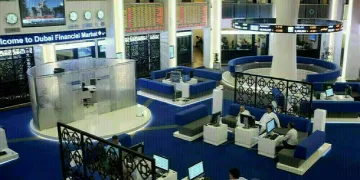Investing.com – WTI crude oil prices settled higher Tuesday shrugging off fears of an uptick in global output following a report that the U.S. government had asked major oil producers to increase oil output.
On the New York Mercantile Exchange for July delivery rose 2.1% to settle at $65.52 a barrel, while on London’s Intercontinental Exchange, fell 0.16% to trade at $75.16 a barrel.
Crude prices rebounded from session lows as focus shifted toward U.S. energy inventory data due Wednesday expected to show a draw in domestic crude supplies for the second straight week.
Oil prices started the day on the back foot after Bloomberg reported, citing sources, the U.S. government had asked Saudi Arabia and other OPEC members to increase oil output by around 1 million barrels a day.
The request comes in the wake of President Trump’s tweet in April, in which he criticised OPEC and claimed oil prices were “artificially high.”
Jeff Currie, Goldman’s global head of commodities research, played down the impact of an increase of 1 million barrels per day, insisting stockpiles would continue to edge lower in the second half of this year.
Sentiment on oil prices remained mostly negative, however, as investors continued to fear OPEC, at its meeting on June 22, could ease production curbs to offset falling supplies in Venezuela and an expected drop in Iran oil exports as U.S. sanctions loom.
In November 2016, OPEC and other producers, including Russia agreed to cut output by 1.8 million barrels per day (bpd) to slash global inventories to the five year-average. The OPEC-led deal was renewed last year through 2018.
A fresh batch of inventories data from the U.S. Energy Information Administration data due 10:30 ET Wednesday expected to show U.S. crude stockpiles fell by 1.824 million barrels last week.
Fusion Media or anyone involved with Fusion Media will not accept any liability for loss or damage as a result of reliance on the information including data, quotes, charts and buy/sell signals contained within this website. Please be fully informed regarding the risks and costs associated with trading the financial markets, it is one of the riskiest investment forms possible.
Source: Investing.com



























